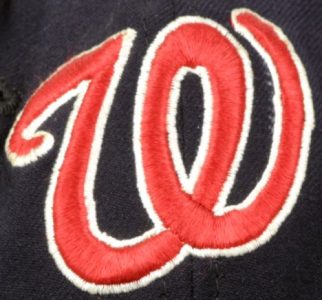In October 1911, as the Philadelphia Athletics were playing the New York Giants in the World Series. Edward J. Walsh, a founding owner and director of Washington’s American League team, met with Cincinnati Manager Clark Griffith at Philadelphia’s 30th Street Station. That meeting helped determine the fate of Major League Baseball in Washington for nearly 50 years.
Walsh was there to ask Griffith, the former pitcher who helped found the American League, if he’d be interested in managing Washington and perhaps have a chance to become a part owner. Griffith, eager to gain an ownership share of any big league club, had been thwarted years earlier in an effort to buy into the Detroit franchise. He wasn’t about to miss another chance. (In a 1913 speech, he said he had tried to buy shares in the Washington team as early as 1908.)

Before October ended, Walsh arranged for Griffith to meet with the team’s president, Thomas Noyes, and the board of directors at the Commercial Club off Lafayette Square, near the White House. Noyes, who had met Griffith when the Old Fox was managing the pre-Yankee Highlanders and both served on the A.L.’s rules committee, wasn’t able to attend the meeting. Still, the others on the board told Griffith that the team was doubling its capital stock in part to help pay for rebuilding the wooden stadium that had been destroyed in a fire the previous March. Several of the board members, all part owners of the team, let Griffith know that if he had the money, he could buy into the ownership group.
Griffith’s eagerness to take them up on the offer led several of the part owners to raise their asking price to $15 a share from $12.50. However, Noyes, Walsh and Benjamin Minor agreed to sell 1,200 of their shares to Griffith for what the shares had cost them. Then, if Griffith had the money to do so, he could buy 800 shares from the other directors at $15 a share, giving him 2,000 shares, or 10 percent ownership. That would make him the largest single shareholder. A deal was struck and on October 27, 1911, Clark Griffith signed a three-year contract to manage the Senators.

Griffith, not a wealthy man, at that point didn’t have enough money for the shares he had agreed to buy. Turned down for loans by Ban Johnson and Charles Comiskey, Griffith mortgaged his ranch in Montana to complete the deal.
With the help of the two finest seasons of Walter Johnson’s great career, Griffith immediately led Washington to two second-place finishes, winning 91 and 90 games and being for the first time involved in pennants races.
Noyes did not live to witness much of the success. He died of pneumonia at age 44 on August 21, 1912. At season’s end, Minor was elected team president and W. Harryman Rapley treasurer. Walsh, who had been vice president, was reported to have been elected secretary, although he apparently alternated between the two positions over the next several years. Those three men, who had become part owners at the establishment of American League baseball in Washington, remained in their ownership roles until selling their shares to Griffith and his silent partner, William Richardson, at the end of the 1919 season.
Walsh remained on good terms with Griffith and handled some insurance work for the team over the years until his death in 1946, according to his grandson, Taylor Walsh. The younger Walsh is working on a biography of his grandfather. When Walter Johnson arrived in Washington in 1907, he stayed briefly with Ed Walsh at the family’s home in Chevy Chase, Taylor Walsh said.
The son of Irish immigrants, Ed Walsh was born in Washington in 1870. His family lived above the grocery store they owned in Northwest D.C.’s Swampoodle neighborhood, home to the ballpark of one of the city’s early professional teams, the National League’s Washington Statesmen, from 1886 to 1889.
Walsh attended St. John’s College High School and Georgetown University, where he played on the baseball team. After graduating from Georgetown in 1893, he began a career in the insurance business in the District, according to his grandson. It’s not clear how or when he came to know Byron Bancroft “Ban” Johnson, the founder of the American League, but in the fall of 1900, Johnson enlisted Walsh, Ben Minor, a lawyer, and “Harry” Rapley, owner of the National Theater, as investors in a Washington franchise in the new major league.
Although Ban Johnson said publicly that Jimmy Manning, who essentially was moving his Kansas City team to D.C., and Fred Postal, a Detroit hotel owner, would be the primary stockholders in the Washington team, Johnson himself held 51 percent of the shares. Walsh, Minor and Rapley did not become known as part owners until Manning and Postal were long gone.
In 1905, Ban Johnson sold his shares to a local group that included Noyes, whose family owned the Evening Star, Scott Bone, Henry West, Thom Corcoran, Walsh, Minor and Rapley.
The key role Ed Walsh played in bringing Griffith to Washington is briefly mentioned in Shirley Povich’s The Washington Senators in 1954, Tom Deveaux’s The Washington Senators, 1901-1971 in 2001 and Ted Leavengood’s biography of Griffith in 2011. But clearly his name and the extent of his role in the team’s history remain unknown to most fans of Washington baseball.
A version of this appeared in the fall 2021 newsletter of SABR’s Business of Baseball committee.
